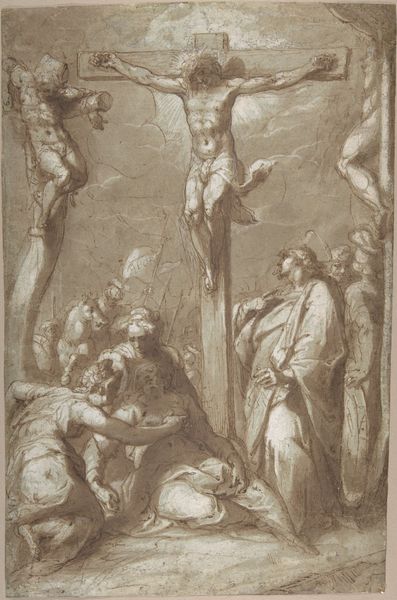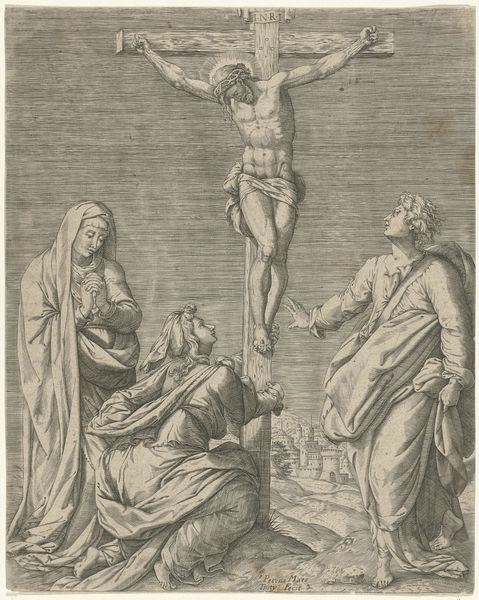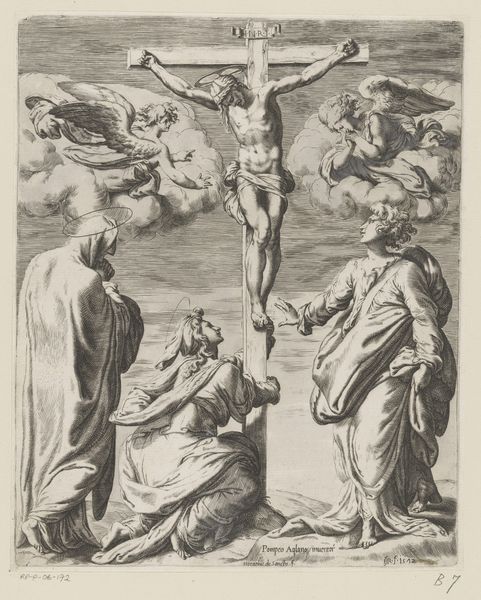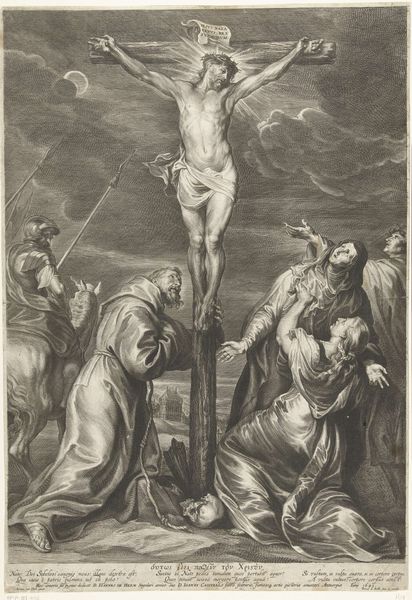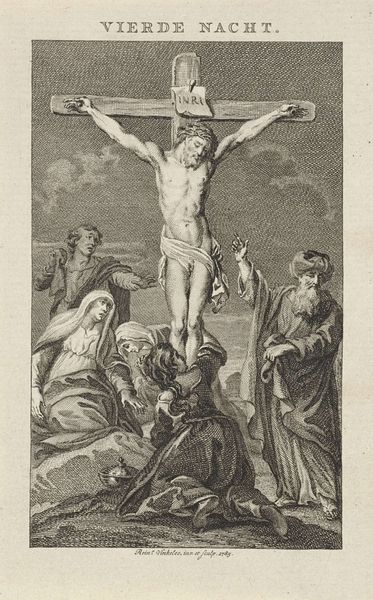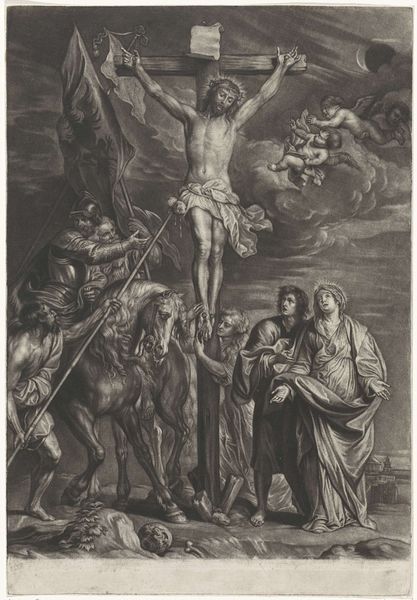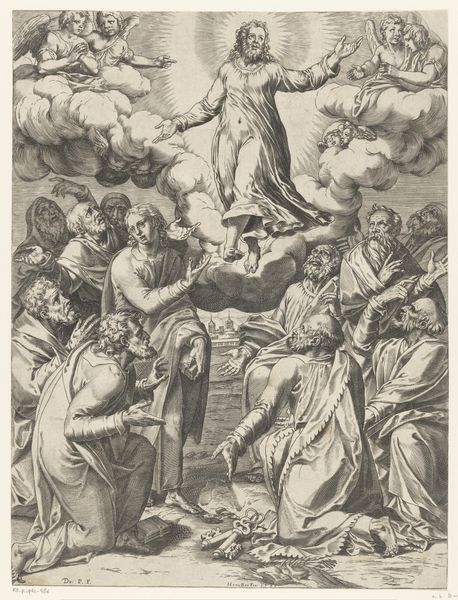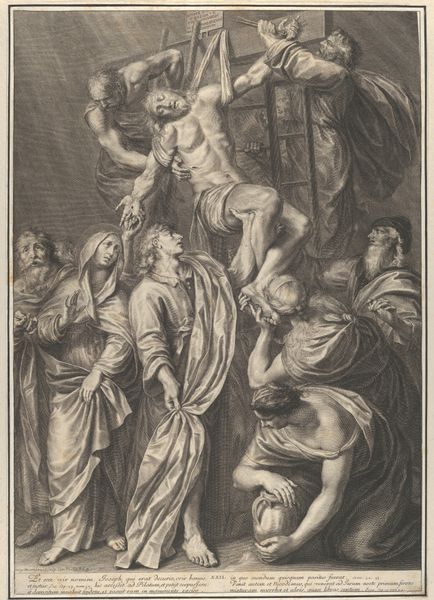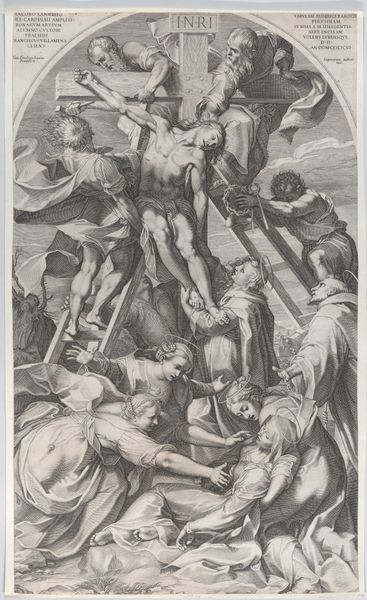
Christ on the Cross Speaks with the Good Prisoner, from The Passion of Christ, plate 20 1664
0:00
0:00
drawing, print, engraving
#
portrait
#
pencil drawn
#
drawing
#
allegory
#
baroque
# print
#
figuration
#
form
#
pencil drawing
#
pen-ink sketch
#
line
#
portrait drawing
#
crucifixion
#
history-painting
#
engraving
#
christ
Dimensions: Sheet: 19 7/8 in. × 14 in. (50.5 × 35.5 cm)
Copyright: Public Domain
Editor: This is "Christ on the Cross Speaks with the Good Prisoner, plate 20" by Gr\u00e9goire Huret, created in 1664. It's an engraving and a drawing that depicts the crucifixion. There's an incredible amount of detail. What do you make of this image? Curator: The image certainly carries immense cultural and emotional weight, doesn't it? Beyond the immediate depiction of Christ's crucifixion, notice the figures surrounding the cross. How do their postures and expressions contribute to the overall meaning for you? Editor: I see grief, supplication, maybe even denial among the crowd. The "Good Prisoner," seems reflective, detached even, unlike the others. Curator: Precisely! Huret uses well-established Christian iconography but also layers psychological complexity onto these figures. Consider how the symbols—the cross itself, the crown of thorns—tap into centuries of cultural memory. What feelings are evoked when you observe this visual language? Editor: I feel the historical weight of it all. The symbols feel incredibly charged. There’s something theatrical about it too, like a staged scene designed to elicit a response. Curator: It is Baroque, after all. The Baroque era often employed drama to connect emotionally with viewers. Note how the artist uses light and shadow and swirling lines to create that drama, enhancing the symbolic weight. What does that dynamic add for you? Editor: It heightens the emotion. It makes me consider not just the religious meaning but also humanity's capacity for both cruelty and compassion, embodied by Christ and the prisoner respectively. Curator: Exactly. Through the conscious deployment of these artistic and cultural symbols, the artist invites us to reflect not only on faith but also on our own moral compass. What resonates with you most after our conversation? Editor: I think I understand better how even the smallest gestures or symbols in a piece like this are built upon layers of meaning that can evoke so much feeling, even centuries later.
Comments
No comments
Be the first to comment and join the conversation on the ultimate creative platform.

